To fly smooth figure-eight patterns with your drone, focus on mastering throttle control for consistent speed and altitude. Plan your path beforehand, visualizing the route and selecting clear reference points. Maintain a steady altitude throughout the maneuver using precise throttle adjustments. Practice smooth stick movements, making small, deliberate inputs for better precision and control. Always adjust for wind conditions, compensating with power and control inputs to maintain symmetry. These five tips will help you achieve graceful figure-eights, but perfecting this skill requires practice and patience. As you explore these techniques further, you'll reveal the secrets to truly impressive drone piloting.
Key Takeaways
- Master throttle control for consistent altitude and smooth transitions throughout the pattern.
- Plan your figure-eight path beforehand, considering wind, obstacles, and reference points.
- Maintain a steady altitude using small, precise throttle adjustments and horizon monitoring.
- Practice smooth stick movements with coordinated rudder inputs for precise maneuvering.
- Adjust your flight technique to compensate for wind conditions, adapting power and turn angles.
Master Throttle Control

Three key elements are essential for mastering throttle control in figure-eight flight patterns.
First, you'll need to develop a keen sense of anticipation. Predict when you'll need to adjust your speed and make subtle changes before reaching critical points in the pattern. This proactive approach will help you maintain a smooth, consistent flight path.
Second, focus on maintaining a constant altitude throughout the maneuver. As you enter turns, you'll need to increase throttle slightly to compensate for the loss of lift. Conversely, reduce power as you level out to avoid gaining altitude. Practice these adjustments until they become second nature.
Lastly, master the art of coordinating throttle with rudder and aileron inputs. As you enter the crossover point of the figure-eight, you'll need to reduce throttle slightly while applying opposite rudder to maintain your heading. This coordination is vital for executing a precise and graceful pattern.
Plan Your Path Beforehand
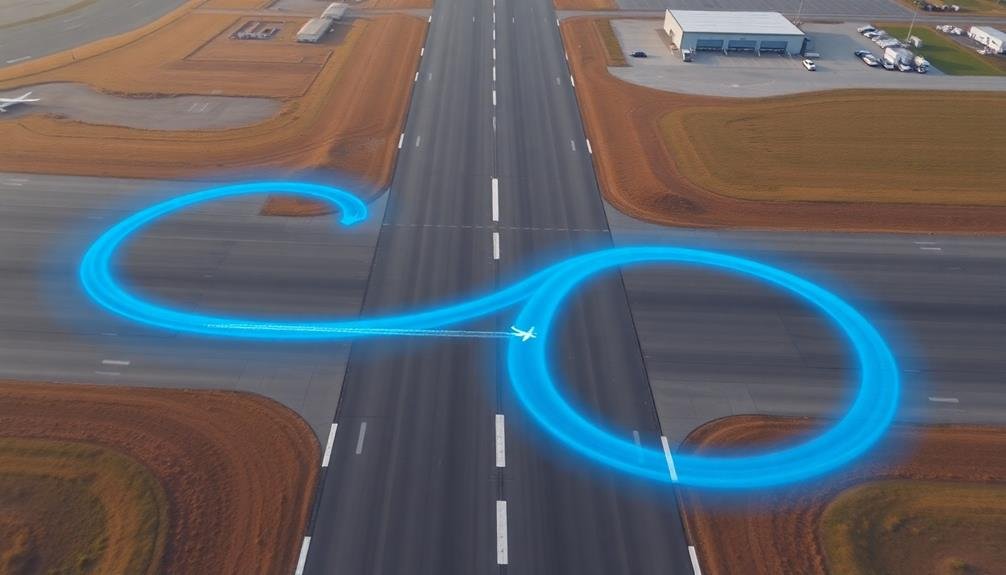
Visualization is key when planning your path for figure-eight flight patterns. Before takeoff, mentally map out your intended route, considering factors like wind direction, obstacles, and available airspace. Imagine two large circles intersecting at their edges, forming the classic figure-eight shape.
Choose two distinct reference points on the ground to serve as the centers of your imaginary circles. These could be trees, buildings, or other notable landmarks. Determine the size of your figure-eight based on your drone's capabilities and local regulations. Smaller patterns offer tighter control, while larger ones allow for smoother shifts.
Plan your entry point carefully. It's often easiest to begin at the intersection of the two circles, flying into the first loop. Decide whether you'll fly clockwise or counterclockwise for each circle.
Consider altitude changes during your flight to add depth and complexity to your pattern. Anticipate potential challenges, such as sudden gusts or unexpected obstacles. Have a contingency plan ready in case you need to abort the pattern.
Maintain Consistent Altitude
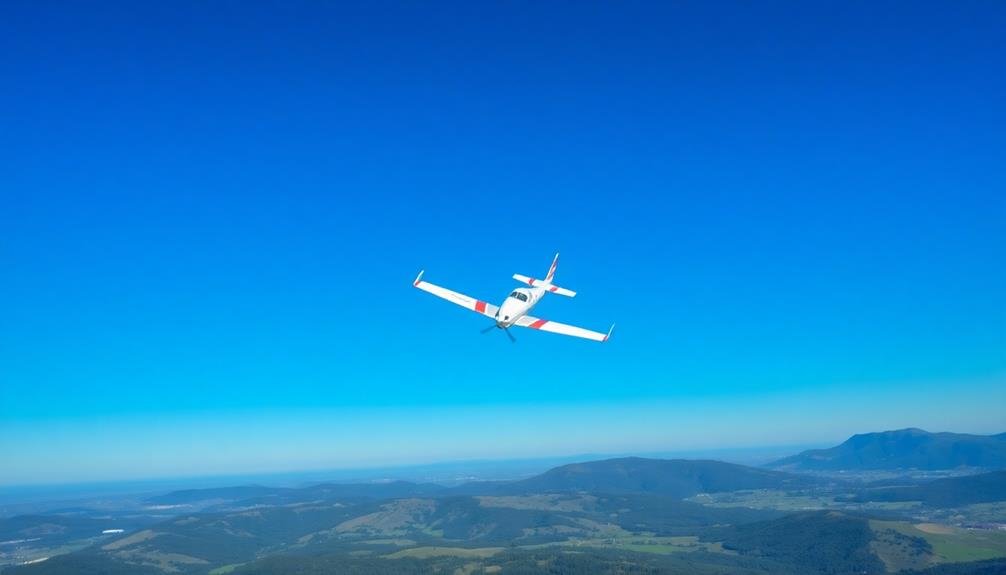
Mastering altitude control is essential for executing smooth figure-eight patterns. As you fly, focus on maintaining a consistent height throughout the entire maneuver. This consistency will give your figure-eight a polished, professional appearance and demonstrate your skill as a pilot.
To keep your altitude steady, use small, precise adjustments to your throttle. Don't make sudden, large changes that could disrupt your flight path. Keep your eyes on the horizon and use it as a reference point to gauge your height. If you notice you're drifting up or down, make gentle corrections to bring yourself back to the desired altitude.
Wind can be a significant factor in maintaining altitude. When flying into the wind, you may need to increase power slightly to maintain height. Conversely, when flying with the wind, reduce power to avoid gaining altitude.
Practice in various wind conditions to improve your ability to compensate for these effects.
Practice Smooth Stick Movements
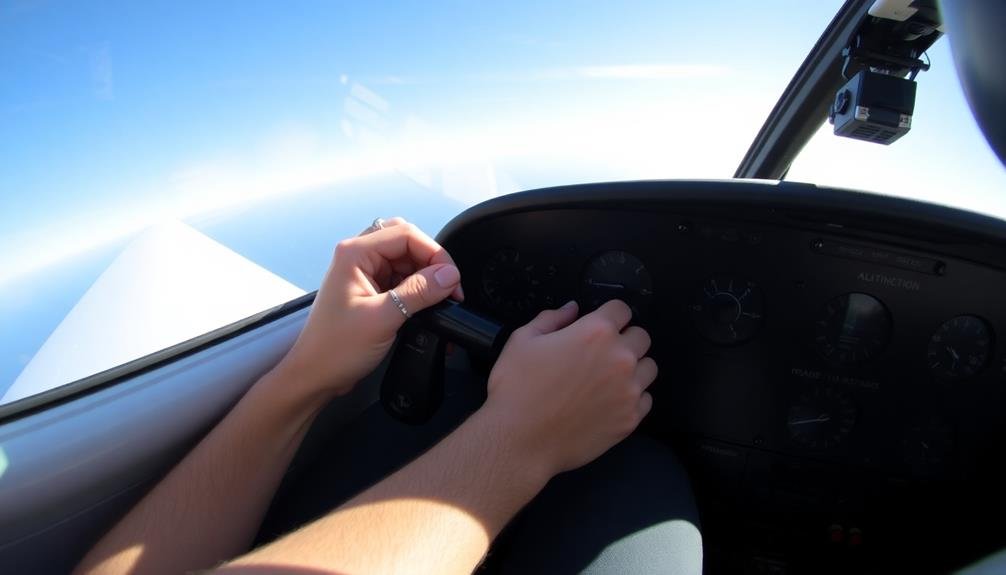
Smooth stick movements are the key to achieving graceful figure-eight patterns. When executing a figure-eight, you'll need to maintain precise control over your aircraft's roll, pitch, and yaw. Practice making small, deliberate adjustments to the control stick rather than abrupt, jerky motions. This will help you maintain a consistent flight path and avoid overcorrecting.
To develop smooth stick movements, focus on:
- Keeping your grip relaxed but firm
- Using your fingertips for fine control
- Anticipating necessary adjustments
- Coordinating stick and rudder inputs
Start by practicing gentle turns and gradually increase the complexity of your maneuvers. As you become more comfortable, try to visualize the figure-eight pattern in your mind before executing it. This mental preparation will help you anticipate the required stick movements and make smoother shifts between turns.
Remember that smooth stick movements aren't just about aesthetics; they also contribute to better overall control and reduce strain on the aircraft. By mastering this skill, you'll not only improve your figure-eight patterns but also enhance your general flying abilities.
Consistently practice these techniques during each flight session to build muscle memory and refine your control inputs.
Adjust for Wind Conditions
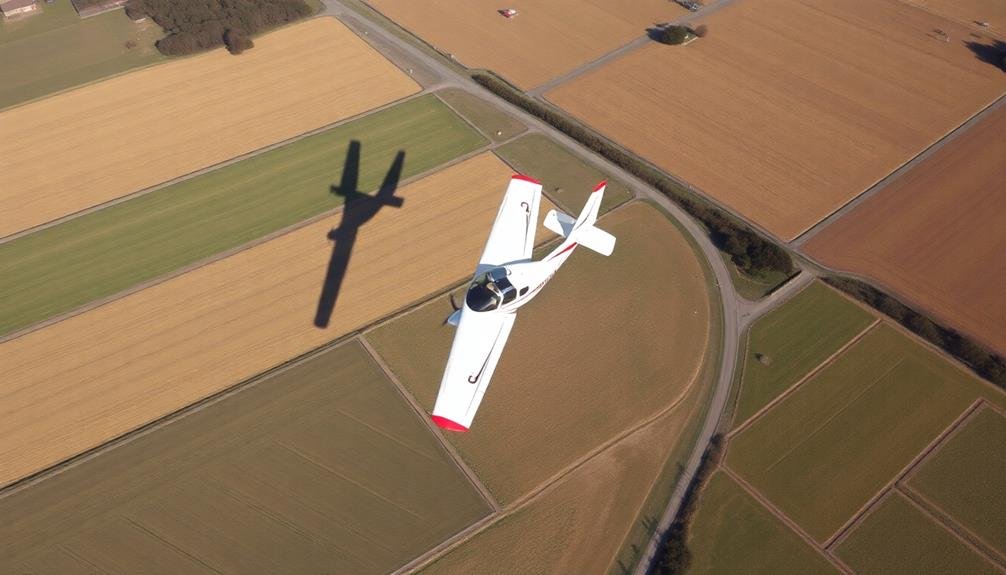
Wind is a critical factor in executing smooth figure-eight patterns. You'll need to constantly adjust your control inputs to compensate for wind effects. When flying into the wind, you'll experience slower ground speed and may need to increase power. Conversely, when flying with the wind, you'll move faster over the ground and might need to reduce power.
Pay attention to crosswinds, as they'll push your aircraft off course. You'll need to apply slight rudder and aileron corrections to maintain your intended path. Remember that wind speed and direction can vary at different altitudes, so be prepared to make continuous adjustments throughout your flight.
To maintain a consistent figure-eight shape, you'll need to steepen your turns when flying into the wind and shallow them when flying with it. This compensates for the difference in ground speed and helps keep your pattern symmetrical.
Practice in various wind conditions to improve your ability to read the wind and make appropriate corrections. By anticipating wind effects and adjusting proactively, you'll achieve smoother, more precise figure-eight patterns regardless of the weather conditions you encounter.
Frequently Asked Questions
What's the Ideal Aircraft Size for Practicing Figure-Eight Patterns?
You'll find that smaller, more maneuverable aircraft are ideal for practicing figure-eight patterns. Light sport planes or single-engine trainers like Cessna 152s or Piper Cubs offer the agility you need to perfect these flight maneuvers effectively.
How Long Does It Typically Take to Master Figure-Eight Flight Patterns?
You'll typically need several weeks to master figure-eight patterns. Practice regularly, focusing on smooth shifts and consistent altitude. Don't rush; it's about precision and control. Your skill level will determine how quickly you progress.
Are There Specific Weather Conditions Best Suited for Figure-Eight Practice?
You'll find calm, clear days with light winds ideal for figure-eight practice. Avoid gusty conditions or turbulence. Early mornings often offer the best weather. Don't forget to check local forecasts before heading out to fly.
Can Figure-Eight Patterns Be Incorporated Into Aerobatic Routines?
Yes, you can incorporate figure-eight patterns into aerobatic routines. They're versatile and add elegance to your performance. You'll need to practice smooth shifts and maintain precise control throughout the maneuver for a polished appearance.
What Are Common Mistakes Beginners Make When Attempting Figure-Eight Flight Patterns?
You'll often misjudge turn timing, causing uneven loops. You're likely to struggle with maintaining altitude and consistent speed. You might forget to adjust for wind, leading to distorted shapes. Don't rush; practice patience and smooth control inputs.
In Summary
You've now got the key tips for perfecting your figure-eight flight patterns. Remember, it's all about finesse and preparation. Keep practicing your throttle control, plan ahead, and stay level. Don't forget to make smooth stick movements and account for wind. With time and patience, you'll master this classic maneuver. Soon, you'll be flying figure-eights like a pro, impressing fellow pilots and spectators alike. Keep at it!

As educators and advocates for responsible drone use, we’re committed to sharing our knowledge and expertise with aspiring aerial photographers.
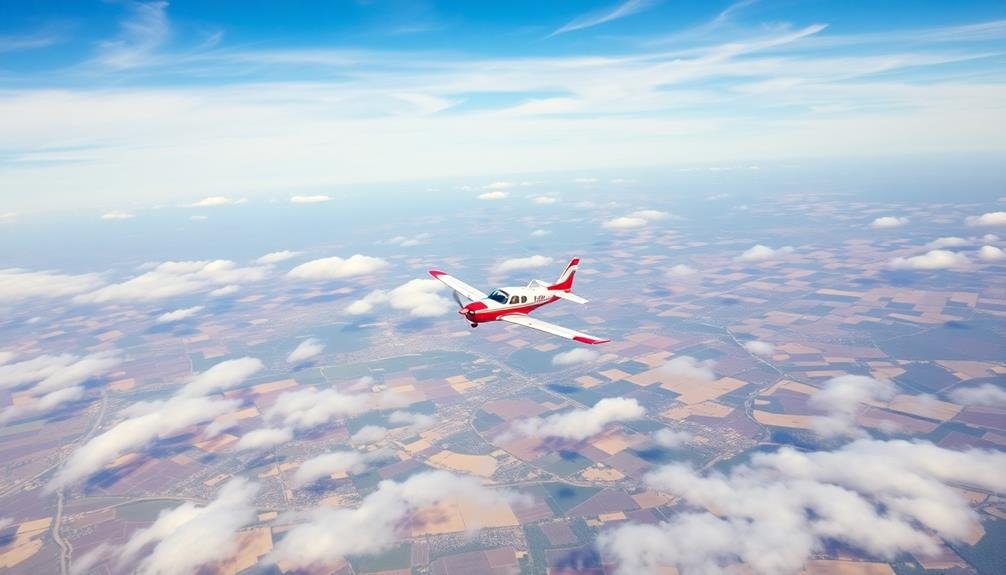



Leave a Reply